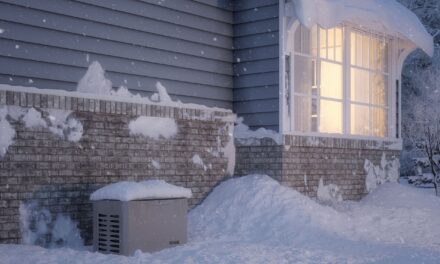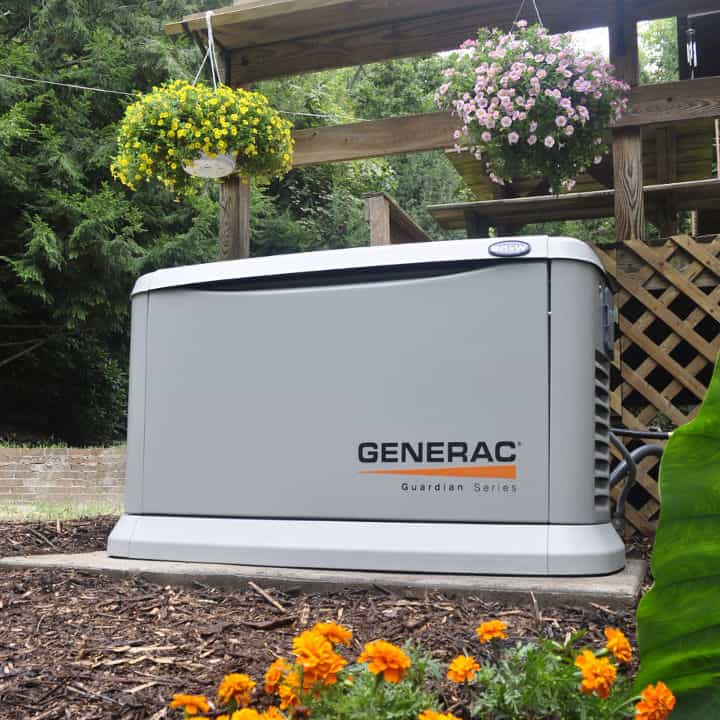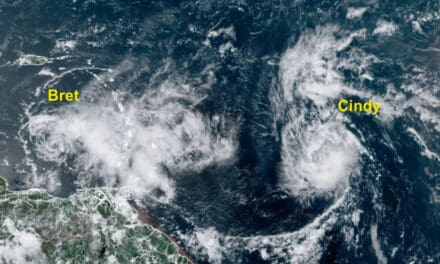Coastal Residents Prepare for Above Average 2020 Hurricane Season
June first marks the start of the 2020 Hurricane Season. The Tropical Meteorology Project at Colorado State University issues annual reports and forecasts on the Atlantic Hurricane Season. The first discussion takes place in mid December followed by a long-range forecast in April. Long-range forecasts use various weather patterns around the globe to provide advance insight based on previous observations and historic record.
Every year, Norwall PowerSystems provides information on the coming hurricane season and how to prepare for the season’s storms. Hurricane Preparedness Week is an ideal time to review existing plans and preparations or create a new plan and put it into action.
In this Hurricane Preparedness Post you will find:
Table of Contents
- A 2020 Hurricane Season Forecast Update
- How to Determine Hurricane Risks
- Develop an Evacuation Plan
- Assemble Disaster Supplies
- What to Know About Insurance Coverage
- How to Prepare Your Home Before a Hurricane
- What You Can Do to Help Neighbors
- Complete a Written Plan and Put it Into Action
- Emergency Power Plans
Updated 2020 Hurricane Season Forecast

A big factor that determines the level of activity in the Atlantic Basin is the ocean temperature in the eastern Pacific Ocean, often referred to as the Southern Oscillation between La Niña and El Niño. The current warm conditions are expected to cool by summer and fall with the potential for a weak La Niña. At the same time, the Atlantic Basin is warmer than usual.
The earlier 2020 Hurricane Season Forecast from December 2019 is now updated to include 16 named storms (12.1 average,) 8 Hurricanes (6.4 average,) and 4 Major Hurricanes (2.7 average.)
The 2020 Hurricane Season will mark the fifth consecutive year of above average activity.
Determine Your Risk Factors
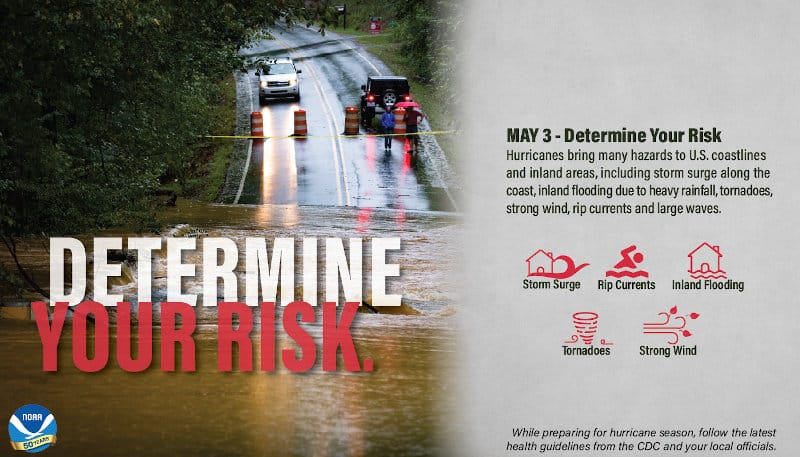
If you live anywhere along the East or Gulf Coast or in the Caribbean, you should Determine Your Risks and Make Plans to Survive a Hurricane. Following landfall, a hurricane can have impacts far inland. Hurricane Sandy brought storm force winds and power outages to Michigan and the Great Lakes.
Storm Surge and inland flooding take more lives and cause more property damage than all other Hurricane Risk Factors combined, including extreme wind. Storm surge moves with the storm and begins to inundate the coast hours ahead of the storm. Fast moving water rises quickly and may travel miles inland along waterways. Heavy rain causes flooding far inland from the coast. Coastal communities that expect storm surge or flooding often issue evacuation orders.
While extreme wind makes headlines, a well structured home with windows and doors covered by plywood or storm shutters can withstand the worst of the wind.
Hurricanes and Tropical Storms are cyclonic, rotating weather systems. The arms of the storm may spawn tornadoes, another cyclone. Although usually short lived, they cause damage and injury. Hurricanes can devastate local power grids and leave millions without power for days. Some residents will wait weeks for power restoration.
Develop an Evacuation Plan
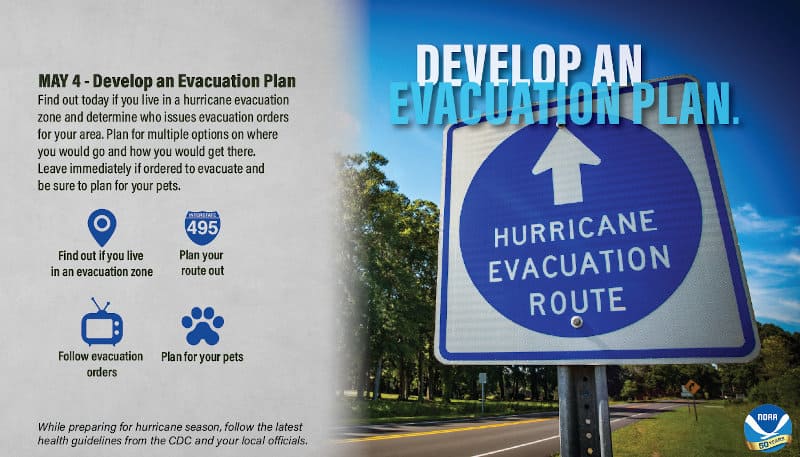
No one wants to leave their home, but if staying risks life or limb, it is never worth staying. If your community issues evacuation orders, complete your home preparations and leave well before the storm arrives. Unforeseen problems including car trouble or storm that suddenly moves faster than expected could complicate your departure or even leave you trapped with nowhere to go and without resources.
Once the storm arrives, first responders have difficulty reaching people in need. Property can be replaced. People are irreplaceable.
Create a Home Evacuation Plan in advance. Know your evacuation routes, where you will go, and how you will get there. A written plan for evacuation reduces stress and anxiety while it ensures that you are ready to leave when it becomes necessary.
Assemble Disaster Supplies
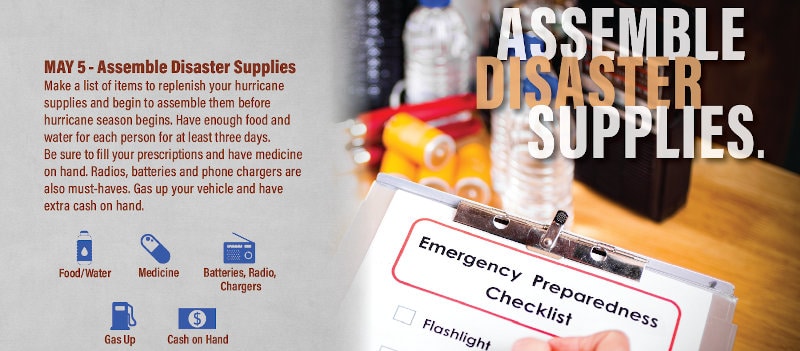
When officials warn that a hurricane may approach, shortages of food, water, and building supplies follow soon after. Having a supply of food, a way to store water, and the building supplies necessary to reinforce your home make it unnecessary to shop. At worst, you will pick up a few items to supplement your stored supplies.
Assemble a Kit with a list of supplies you can take with you during an evacuation to make it simple to shelter in place or stay home without trips to depleted grocery stores, hardware stores, and home centers. FEMA recommends at least three days worth of food and water for each person and pet. A five-day supply is better. If you live in a remote location with only one road access, plan for two weeks or more.
Does Your Insurance Cover Hurricane Damage?
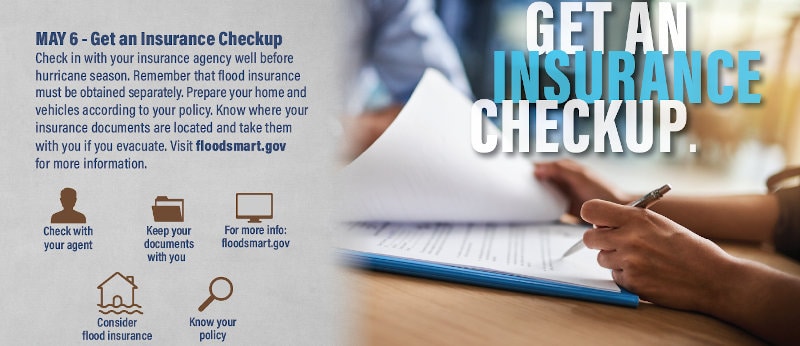
Did you know that homeowner’s insurance won’t cover flooding? It is true. Many homeowners have the misconception that their homeowner policy provides an umbrella safety net, but that net does not cover damage from storm surge, floods, heavy rains, or any other water source with the exception of a broken pipe in your home.
A flood can make your home uninhabitable. Mud, silt, and dirt are only the start. Mold penetrates walls and poses a serious health hazard. Mitigation costs thousands of dollars. Extreme wind can also cause damage that some policies may not cover.
The National Flood Insurance Program makes flood insurance available to all homeowners. Get an Insurance Checkup for Flood and Wind Damage.
Prepare Your Home Before a Hurricane
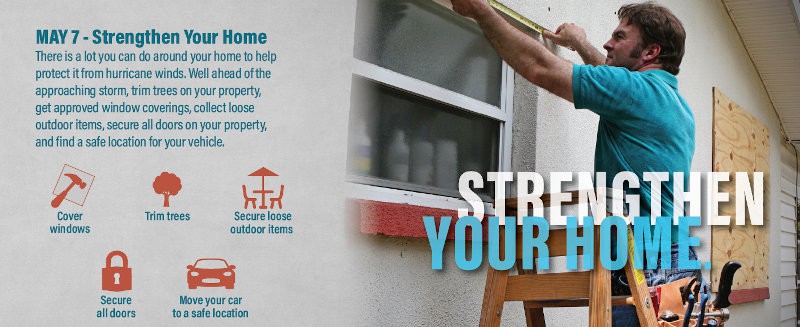
So much to do, so little time. A hurricane watch is issued 72 hours before a hurricane makes landfall. Before that, the forecast may give up to 5 days notice in advance of a hurricane.
If you planned ahead and assembled your supplies, you already have materials to protect windows and doors. The process of covering all the vulnerable openings (windows, doors, garage doors) in the house structure protects the roof and the rest of the house from damage. An open window or door allows the pressure inside to build and the wind may lift whole sections of roof.
Structural ties within the frame transfer wind loads from the roof, down through the frame, to the home’s foundation. Outside, storing any movable objects, removing dead branches or trees further reduces damage. Plan to Prepare Your Home Against a Hurricane.
Help Your Neighbors
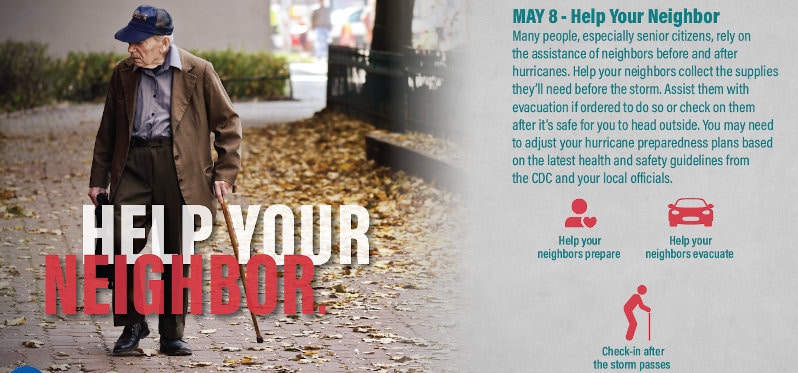
Whether through lack of knowledge or for some the physical inability to prepare ahead can turn into disaster for your neighbors. Their lack of preparation can also impact your home and family.
As you prepare in advance of the 2020 hurricane season, think about your neighbors. Talk to them, share your plans, and encourage them to plan and prepare before the season arrives. Some may not have the ability to prepare and need help, especially seniors or those with disabilities. A neighborly helping hand can make all the difference. Share Your Emergency Preparation Tips and at the same time, listen to theirs.
Complete A Written Plan
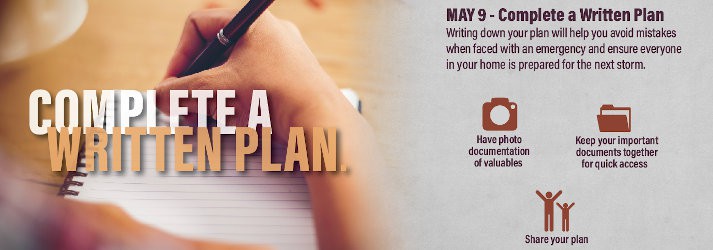
Write your plan down and share it with your family. A completed plan includes supplies, plans to evacuate or shelter in place. What will you do for power when the utility can’t provide it for two weeks?
A completed plan includes the assembled kits for staying home, all your food and water, a family kit for evacuation (includes your stay home kit) and a pack of supplies for each person. Plan for prescription and over the counter medicines. Check with doctors and pharmacies to ensure enough medications for the days and weeks ahead of a hurricane disaster.
Make a Hurricane Disaster Plan and Put it Into Action before June first.
Plan for Emergency Power

More than ever before, we depend on electrical power for so many things. It keeps our homes comfortable, our food safe, and makes communication possible under difficult circumstances.
A power outage that lasts more than a few hours puts your food at risk and leaves your home uncomfortable. It’s not that hard to live without lights, but lack of communication, especially in an emergency, leaves us vulnerable and out of touch. Communication also provides access to the information necessary for good decisions.
Did you know that FEMA Recommends a Source of Emergency Power?
Hot, humid weather often follows a hurricane along the Gulf Coast and East Coast. Temperatures that climb into the triple digits when the ground is saturated and flood waters remain can make life almost unbearable. The right backup power source keeps the air conditioning working in the summer and the heat in the fall and winter.
Following Sandy, some homes without power had burst pipes and suffered flood damage.
A standby generator can power essentials like refrigerators, pumps, freezers, and heating. Some call air conditioning a convenience, but some people can’t tolerate the heat and humidity. Natural gas is available in many communities. Propane stored in a properly sized tank can provide power for at least a week or two.
A Portable Generators for Emergency Use can keep some essentials operating, but gasoline is hard to find following a disaster and may not be available for days or even longer. Without power, gas stations can’t sell gas. If don’t have a Natural Gas or Propane Standby Generator, consider a portable capable of running the refrigerator and some lights, and a few other essentials.


